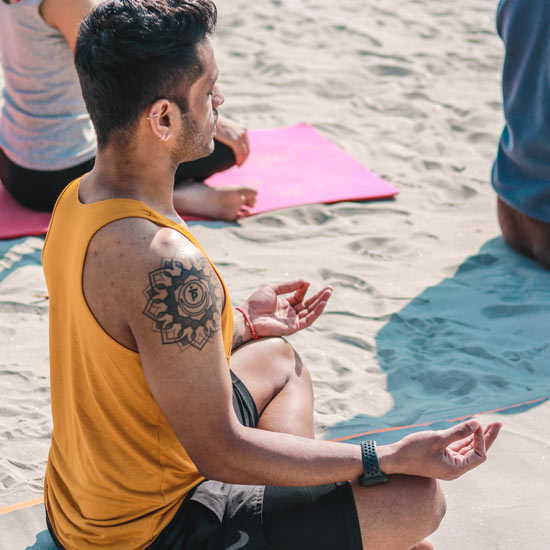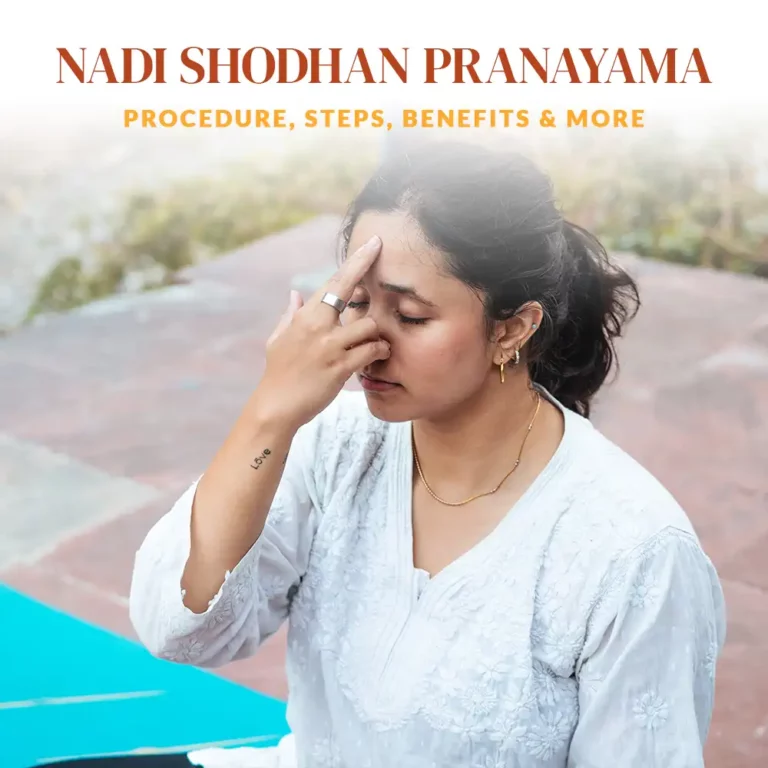Bhramari Pranayama (Bee Breath): Types, Steps, Benefits and Precautions
Introduction to Bhramari Pranayama
The name Bhramari comes from the Sanskrit word ‘Bhramara,’ meaning “bee,” also known as the “Bee Breath,” which is a simple yet powerful breathing technique in yoga. It involves making a bee-like humming sound during exhalation, which helps calm the mind and body. Bhramari is closely tied to meditation and is often used as a tool for mental relaxation and emotional balance.
Pranayama, the practice of controlling the breath, plays a central role in yoga and well-being. By regulating the breath, pranayama helps balance the body’s energy, reduce stress, and improve focus. Bhramari Pranayama, in particular, is beneficial for calming the nervous system and bringing the practitioner into a state of mindfulness.
Origin and Historical Significance
Bhramari Pranayama has roots in ancient yogic texts, such as the Hatha Yoga Pradipika and Yoga Sutras of Patanjali. These texts highlight the significance of breath control (pranayama) for physical, mental, and spiritual well-being. The practice of humming to calm the mind was known even in these early writings.
In Hatha Yoga, Bhramari is considered a “relaxation pranayama,” often used to prepare the practitioner for deeper meditation. The humming sound helps to create inner stillness, reducing mental chatter, and enabling focus. It also aids in balancing the body’s prana (life force) by directing energy inward.
In Indian spiritual traditions, the sound of the bee has been associated with the vibration of the universe. It is believed that by resonating with this sound, practitioners can connect to higher states of consciousness and spirituality. The humming also symbolizes the creation of sound through divine energy.
Types of Bhramari Pranayama
The basic form of Bhramari Pranayama involves sitting in a comfortable seated posture, closing the ears with the thumbs, and making a humming sound during exhalation. Beginners should focus on producing a gentle hum without straining.
In advanced variations, Shanmukhi Mudra (Six-Faced Gesture) is sometimes incorporated. This involves closing the eyes, ears, nose, and mouth using the hands to deepen the sense of inner stillness. The practitioner uses a more focused, prolonged hum, allowing for deeper concentration and mindfulness.
In guided practice, an instructor leads the practitioner, ensuring proper technique and alignment. In unguided practice, the practitioner follows the steps independently but should maintain focus on the sound and the breath. Guided practices are often ideal for beginners.
Step-by-Step Guide to Practice Bhramari Pranayama
- Close your eyes and take a few deep breaths to relax.
- Place your thumbs on the cartilage of your ears, blocking the ear canals.
- Close your eyes with your fingers and rest your other fingers on the forehead or gently on the eyes.
- Inhale deeply through the nose.
- Exhale slowly while producing a humming sound, like a bee, through your nose.
- Continue for 5-10 rounds, focusing on the sound and vibration.
Tips for Achieving the Correct Humming Sound
- Keep the exhalation steady and smooth.
- Ensure the sound is even, not strained or forced.
- Focus on the vibration in your head and chest.
- Avoid rushing the breath—take your time with each exhalation.
Benefits of Bhramari Pranayama
- Stress Reduction: The rhythmic humming calms the mind, reducing stress and anxiety.
- Improved Focus: Engaging the mind with the humming sound, enhances concentration and focus.
- Emotional Stability: It helps manage emotional fluctuations and promotes mental clarity
- Enhanced Respiratory Health: The practice deepens the breath, improving lung capacity and oxygen intake.
- Better Sleep: The calming effect of Bhramari helps reduce insomnia and promotes restful sleep.
- Lower Blood Pressure: By activating the parasympathetic nervous system, it helps in lowering blood pressure.
- Deepened Meditation: Bhramari is often used to deepen meditation, promoting mindfulness and inner peace.
- Energetic Balance: It helps align the body’s prana, enhancing spiritual awareness.
- Connection with the Divine: The humming sound is believed to resonate with the divine vibration, fostering spiritual growth.
Precautions and Contraindications
- Severe Depression: If you’re feeling very low or depressed, it’s best to avoid Bhramari as it can sometimes stir emotional turmoil.
- Ear Problems: If you have ear infections or significant hearing issues, avoid closing the ears during the practice.
- Head Injuries: Those with recent head injuries or neurological issues should consult a doctor before practising.
- Straining the Breath: Avoid forcing the humming sound. Let it be smooth and natural.
- Incorrect Posture: Ensure your spine is straight and your shoulders are relaxed to allow for deep breathing.
- Exhaling Too Quickly: The exhalation should be slow and steady for maximum benefit.
FAQs
- How long should I practice Bhramari? Start with 5-10 rounds and gradually increase the duration as you become more comfortable.
- Can I do Bhramari during meditation? Yes, Bhramari is often used as a tool to enhance meditation and deepen relaxation.
- Is Bhramari Pranayama suitable for children? Yes, Bhramari can be practiced by children, but it should be taught in a gentle, playful manner.
- Can I practice Bhramari Pranayama with closed lips? Yes, the humming sound is produced through the nose, but the lips should remain relaxed and closed during exhalation.
- How can I improve my Bhramari technique? Focus on smooth, even exhalations, and ensure the humming sound is gentle. Use the Shanmukhi Mudra for deeper concentration.






